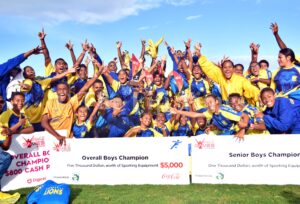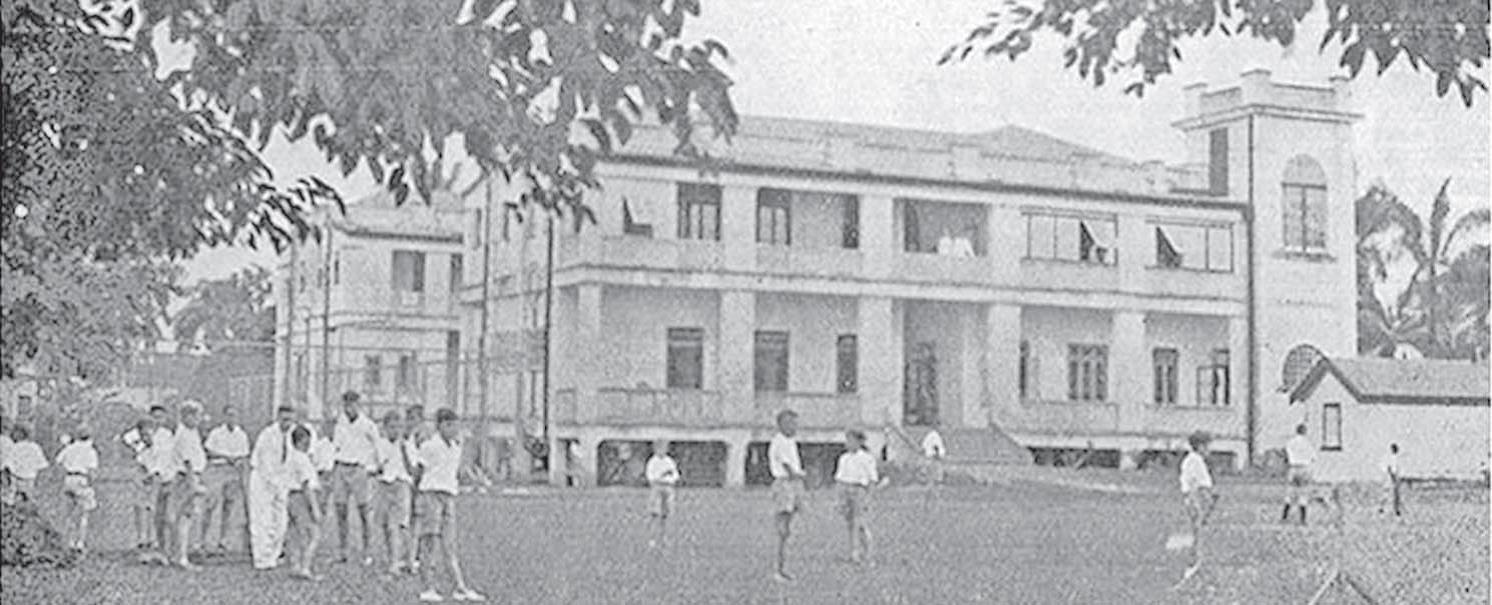The history of the renowned Suva Grammar School began way back in 1917 when the Fijian Colonial Administration under the British Empire made a decision to purchase land next to the Suva City Carnegie Library.
Originally opened on July 8, 1918 the then Boys Grammar School (BGS) was established to cater for European boys, British in particular.
The school used the New Zealand secondary school curriculum and teaching staff members were brought in from England, Australia, New Zealand and catered for both day scholars and boarders.
The building in Selbourne St from 1883 to 1918 housed the Suva Public School (SPS), which was coeducational.
In the same year, the SPS building up the hill became the Girls’ Grammar School. Afterwards, some timber buildings were built across the road as the administration and classroom buildings, and this building became the girls’ hostel.
The BGS playground was developed on new land reclaimed during 1923, and the original building was extended toward the sea in the early 1930s.
The process of land reclamation continued along the coast, away from the city toward Nasese well into the 1960s.
In the 1940s land was created on which “temporary” wooden buildings were constructed, and by 1950 most of the BGS teaching activities moved there.
According to a personal recollection by Roderick Ewins – who was an old scholar of BGS – in the 1950s the space where the Fiji Travelodge Hotel stands (now known as Holiday Inn), between the old BGS and the Grand Pacific Hotel was a very rough work in progress known to BGS schoolboys as “The Reclamation”.
“It was officially out of bounds to us, which made it irresistible, and many toy boat races were held in the pools and drains on that land,” Mr Ewins personal recollection read.
“The boats were generally a sliver of very light vau (Hibiscus tiliaceus) wood with a large dry leaf such as a makita (Parinari laurina) stuck into it as a sail.
“Better still was hopping over the sea wall at low tide and conducting the races in the streams, the current in these pools combined with the sea breeze to race the little craft along at breakneck speed.”
He wrote that naturally going over the sea wall was even more illegal than going into the reclamation.
“But the occasional administration of two or three whacks of the cane must have seemed a worthwhile risk, because I remember doing it quite regularly.
“Small boys attended the Girls’ Grammar School (GGS) until the end of standard 2 (about Grade 4) when the average age was about eight.
“I never knew whether this was because they were deemed as yet harmless to little girls (an unsafe assumption).
“Or was a humane attempt to defer the inevitable bullying by bigger boys until the little ones were presumed better able to withstand it (an equally misplaced confidence).”
Mr Ewins attended GGS for only one year in 1949, by which time all teaching and administration was done in a rambling assortment of timber buildings across the road from the fine original structure, which functioned exclusively as the girls’ hostel.

“I actually started at Grammar in 1949, attending standard two at the GGS under the caring eye of Miss Sibyl Norton (later Mrs Richard Creigh).
“In 1950 I graduated and went down the hill to BGS and that year standard three classes were still being held in the main building which also housed the boarders, and the headmaster’s office was there too.
“All higher classes and other administrative activities had already moved across the playground to temporary wooden buildings that are still in place over half a century later.
“Standard 3 migrated there in 1951, and from then on only the assembly hall and library (such as it was) remained in the big building, with a small-bore
rifle range for the cadets located underneath the far end.”
He said the last time he visited the not-so-temporary buildings in the 1990s they housed the Fiji Department of Immigration and maintained virtually unchanged the austere impersonality they had in the ‘50s.
“I was sure I could still smell the chalk, like its sister building up the hill, the main building served only as a school hostel building, though through the 1950s school assemblies, school dances etcetera continued to be held in the large hall of the main building.
“There was also a small-bore rifle range under the corner of the building on the far left of photo used by the school cadets, near this grew a kumquat tree that copiously produced possibly the sourest fruit yet evolved by the plant kingdom.
“Lemons, even limes, were almost saccharine by comparison and eating these toxic little objects was, like the most interesting things in and around the school, forbidden – one might have assumed an unnecessary rule in this case.”
He shared like most other prohibited things, this gave it an otherwise unwarranted appeal, and eating them was flagrantly and enthusiastically engaged in at every opportunity.
“It was de rigueur (out of strictness) to prove how tough you were by eating them without pulling a face – something I never achieved, though some even managed a rather horrible rictus-like grin that never quite counterfeited enjoyment.”
Mr Ewins completed preparation for the world at BGS at the end of Form 6 in 1956.
“In 1957, a Form 6a was inaugurated, for those who couldn’t bear to tear themselves away, but that certainly didn’t describe me — I couldn’t wait to leave.”
“In 1960, the two schools were to amalgamate as Suva Grammar School and moved to Veiuto, still facing the sea and further along the continuation of Victoria Pde towards Suva Point.”
Today Suva Grammar School sits proudly near the heart of the city and by the seaside along Vuya Rd.
After 11 years they retained the Coca-Cola Games boy’s division title after bagging 11 gold, six silver and six bronze medals in this year’s Fiji Finals at the HFC Bank Stadium.






